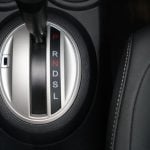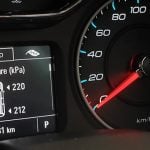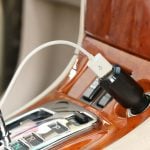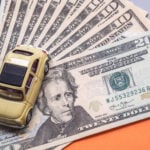The revolutions per minute (RPM) measure how fast your engine is running at a point. Ideally, what RPM should a car drive at? In this article, we break down the details about safe RPM ranges within which your car should run.
The power in a car engine comes from the number of revolutions the crankshaft completes every 60 seconds. The crankshaft powers the pistons and valves, thereby producing the torque required to move the car’s wheels. Thus, the RPM (revolutions per minute) is a direct measurement of how fast the engine is running!
However, a higher RPM does not always correspond to a higher power. You need to know what is the ideal RPM to shift gears so that the car can continue running without damaging the moving engine parts. Here’s everything you need to know about the ideal RPM while driving.
Why is the RPM important?
RPM and power increase only up to a certain level for every speed level and gear combination. As you accelerate, the RPM and power will increase until a certain redline limit is reached (also called Engine Redlining). Breaching this limit can cause severe damage to the moving parts of your engine.
Knowing the ideal RPM to drive at for every speed level is important for the following reasons:
- Driving in the right RPM range can help improve your car’s mileage
- It can help you decide when to shift gears on a manual transmission car
- Ensures you don’t cause damage to the crankshaft or pistons
- Keep the transmission in good working condition
Breaching the red line RPM limit is a concern only if you’re driving a manual transmission car. However, it can also affect automatic transmission vehicles if you have engine issues.
What RPM should a car drive at when accelerating?
When accelerating your vehicle, it is best to stay within a 2000-2500 RPM range. This will give you enough power to reach an acceptable speed level while also ensuring the engine stays within safe operating limits. Refer to the table below for details on what the ideal RPM should be for various driving scenarios.
| Driving Situation |
Ideal RPM Range (Gas Engine)
|
| Idling | 600 – 900 RPM |
| City Driving | 1,500 – 2,200 RPM |
| Highway Cruising | 1,800 – 2,500 RPM |
| Overtaking / High Load | 3,000 – 4,500+ RPM |
What RPM should a car idle at?
Y’know how you tend to keep the car running when you’re doing small errands or waiting to pick someone up? That is known as idling a vehicle.
An idle car is one that is not moving but whose engine is still running. When not in motion, the vehicle should ideally stay between 600 and 1000 RPM. However, if you’re idling in cold weather conditions, the RPM may jump higher to keep the engine running.
If you notice that the car is idling at higher RPMs, it could be because of reasons like:
- Fuse in the Idle Air Control (IAC) motor
- Computer malfunction
- Malfunctioning car throttle
- Leaking IAC vacuum port
What is the best RPM to shift gears?
Different cars have different thumb rules for gauging the best RPM to shift up or down. However, in general, it’s best to shift up when you near 3000 RPM and shift down when you near 1000 RPM.
It is best to shift gears when you feel that you either want more control (shifting down) or don’t want to overstrain the transmission (shifting up). Techniques like short-shifting/shifting early (used by race car drivers to accelerate quickly) and lugging (being in high gear and accelerating with a low RPM) are available.
Automatic transmission vehicles are programmed to shift before the RPM redlines.
How many RPMs should a car be at 70 mph?
In general, it is best to stay between 2500-3000 RPM when driving a car at 70 mph.
What is a normal RPM on a highway?
There is no single RPM that is considered “normal” when cruising on a highway. To reduce wear and tear on the engine and ensure you get maximum fuel efficiency, it’s best to stay in the 2000-3000 RPM range when driving on a highway at 60-70 mph.
If your car seems to be operating at a higher RPM in such a scenario, it’s better to head to an auto shop and check the engine. However, it’s best to stay within safe RPM limits so that you don’t wear out the engine. Excessive wear and tear could affect your auto insurance premiums in the long run!
Does high RPM hurt the engine?
No, in the short run, driving your vehicle at a high RPM does not hurt your engine. Occasionally, redlining the engine does not mean that it will break down – engines are designed to operate way beyond their specified redline limits.
However, that doesn’t mean you should redline your engine often. Consistent redlining can cause premature wear and tear of your engine and damage the valve train (which controls the flow of gas in and out of the engine).
How does engine size affect optimal RPM?
Larger engines produce more torque at lower RPMs. This allows them to cruise efficiently at lower engine speeds. In contrast, smaller engines need higher RPMs to perform at the same level.
What is the impact of transmission type on RPM?
Manual transmissions allow drivers to choose gears and control engine speed directly. Automatic transmissions change engine speed based on the driving situation. Continuously Variable Transmissions (CVTs) help keep the engine running in its most efficient speed range.
Does driving uphill or downhill affect optimal RPM?
Driving uphill typically requires higher RPMs to provide the necessary power. Driving downhill may allow for lower RPMs or engine braking depending on the situation.
How can I monitor my car’s RPM effectively?
Most vehicles are equipped with a tachometer that displays engine RPM. Paying attention to this gauge can help maintain optimal engine performance and fuel efficiency.
Is there a difference in optimal RPM between diesel and petrol engines?
Generally, diesel engines operate efficiently at lower RPMs due to their higher torque output, while petrol engines may require higher RPMs to achieve similar performance.
What is an unsafe RPM?
An unsafe RPM for your car depends on where your car’s redline is. The redline exists to protect your engine from over-revving. Going beyond this redline enters the unsafe RPM range, which manufacturers advise against. Some cars can exceed the redline with ECU remapping—this is how race-tuned versions outperform their stock counterparts.
What RPM gives the best mileage?
This varies by car make, model, and engine tuning. Check your owner’s manual for a recommended RPM range for optimal fuel efficiency. Maintaining a lower RPM and using higher gears helps save fuel. On highways, an RPM of 1,500–2,000 is usually best. For city driving, 2,000–2,500 RPM tends to offer better mileage.
Key takeaways
- For most gas engines, the ideal RPM for cruising is typically between 1,500 and 2,500.
- Driving at high RPMs constantly can reduce fuel efficiency and increase engine wear.
- RPM varies by engine type, car model, load, and terrain.
- Manual drivers can control RPM more directly; automatics adjust automatically.
- Monitor your tachometer to stay in the optimal range for longevity and efficiency.
Renée Martin is a travel and car expert who focuses on road and air travel in the U.S. For the past 6 years, she’s been helping make driving and trip planning easier and budget-friendly for everyday travelers.


















